












over the next 12 months.
Penny believes buyers expect prices to get worse before they get better.
LATEST DATA out of China isn’t making good reading for New Zealand dairy farmers.
Chinese economic growth forecast has been sliced and it’s all linked to the Chinese housing bubble bursting. This means a recovery in the farmgate milk price may be months away.
Westpac senior agriculture economist Nathan Penny says the key driver of the weak short-term price outlook is weak Chinese demand, noting that China is by far NZ’s largest dairy market.
“Unlike most economies post their Covid lockdowns, China’s post lockdown bump in economic activity has underwhelmed expectations,” Penny says.
“Indeed, we have progressively cut our outlook for Chinese economic growth for 2023. From 6.2% in June, we have sliced our forecast to 5.7%, and then to 5.2%. If anything, consensus forecasts have stepped even lower, notably for 2024 with the forecast presently sitting at around 4.7% - and this forecast was made prior to very disappointing July data,” he says.
Curiously, rising costs of living and/or interest rates do not explain the underperformance of the economy. Consumer prices actually fell a touch over the July year, notes Penny.
“Rather, Chinese businesses and households are suffering a crisis of confidence.
“The housing market remains key to the Chinese economic psyche and any pickup in activity. It remains very weak following the bursting of its speculative bubble and the Government’s housing market reforms.
“Officials have begun to incrementally loosen lending policy settings. But further measures are likely necessary. Indeed, we expect additional stimulus, focused on encouraging first home buyers and smaller investors back into the market.
“At the same time, we expect that Chinese officials will try to strike a balance, kick-starting growth in the economy without undoing the hardwon gains from previous reforms.
“Too little stimulus and the economy may stall; too much and a speculative bubble may return. This
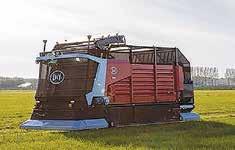
delicate balancing act results in clear risks to our forecasts for Chinese growth and in turn Chinese dairy demand. If anything, we suspect that the Chinese government may favour less rather than more stimulus than we have factored in.”
Global dairy prices have mirrored China’s economic struggles. Since the start of the year, dairy auction prices have fallen by around 22%.
Recent falls have picked up pace, with dairy buyer sentiment at a low ebb. At the last Global Dairy Trade (GDT) auction, prices fell 7.4% overall, with whole milk powder prices plunging 10.9%. The catalyst for the price slump was a sudden increase in auction volumes on offer. Ahead of the auction, Fonterra announced a 5.6% increase in auction volumes

“To this end, these buyers may have signalled to Fonterra that they no longer want to buy direct from Fonterra on a contracted basis. As a result, Fonterra has had to shift this product that it would have sold on contract to the auction platform, putting additional downward pressure on auction prices in the short term.”
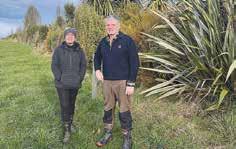
ANZ agriculture economist Susan Kilsby points out that for several decades, China’s growing middle class has meant strong demand for dairy products.


“But Chinese consumers are currently saving rather than spending, so there isn’t sufficient consumer demand to push prices higher,” Kilsby says.
That said, China is still by far the largest importer of dairy products and is buying roughly the same volumes as in the past, she says.
“But as it now has plenty of stock on hand, there is less urgency to secure additional product, so buyers aren’t bidding up prices.
“Other markets also have plentiful stockpiles and subdued consumer demand and have similarly low incentives to buy.
“Buyers have defaulted to a ‘hand-to-mouth’ strategy, buying only what they need. When the market gets a whiff that prices may rise, that strategy is likely to change, and buyers will start bidding to secure product ahead of it, but that may not be until 2024.”
A FONTERRA shareholder says the co-operative’s capital structure experiment has gone wrong.
Garry Reymer, Cambridge, who unsuccessfully stood for Fonterra director elections in 2014, says the co-operative’s share price and farmgate milk price to suppliers are dropping.

And with poor cashflow on farms, the mood among shareholders isn’t good, he adds.
“If we try and look forward 12 months it will be even worse, unless there is a big turnaround in milk price,” Reymer told Dairy News
Reymer points out that the forecast advance rate is $5.50/kgMS to the end of May, $1.20 down on last season.
With a forecast price mid-point of $6.75, the deferred payment will be $1.25 - down $0.25 on the last deferred payment.
Fonterra is expected to pay a good dividend given the milk price, an input cost, is low. Reymer anticipates a dividend of around 38c/share.
He also points out that there will be no more capital distribution like the 50c/share paid out to shareholders last month.
“Add that all up and the hypothetical 150,000 kgMS dairy farm is $180,000 down on season cashflow and $124,000
FONTERRA’S ATTEMPT to stabilise its share price by launching a $50 million share buyback scheme won’t work, says Garry Reymer.

He points out that farmers will only need to hold 1 share for 3 kgMS supplied to the co-op.
“This has the potential to free up hundreds of millions of shares and something that Fonterra will not be able to soak up with $50m,” he says.
“And, once you have a surplus of anything, the price drops even further.
“What will be interesting in all this is how it plays out and how much value shareholders will put on the dividend.
“If investment advisers think dividend is going to support the share price then they would be advising clients to buy Fonterra units now.
“If the future earnings of Fonterra had the same confidence in the market of, say a2 Milk at its peak, the unit price might be up around $30 instead of $3.”
down on the end of year retro payments, for a total of $304,000.
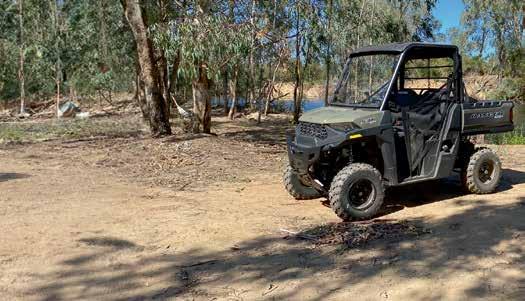
“So, with poor cashflows, high overdraft/ debt, low share price, and the clincher is poor shareholder engagement with the co-op, you have a situation where a hostile takeover offer could well be tabled.”
He says the Asia Pacific region is forecast to have a milk deficit by 2030.
“This is on the back of 209 million more people and a small lift in consumption per capita. It is not hard to imagine then that some of these countries will look to secure their own milk pools if their domestic supply is not able to keep up with demand.
“Then if you throw into the mix the ageing farming population and the water reforms such
as the national policy on fresh water, PC1 and some scope 3 coming, I can see many farmers who would be receptive to any reasonable offer.
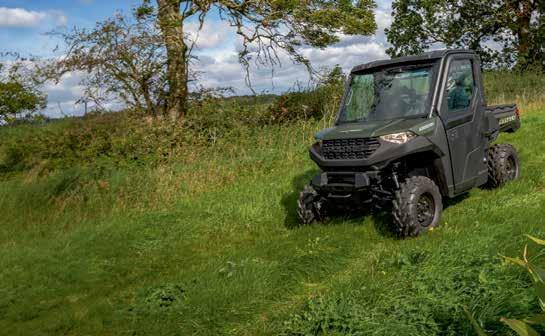
“So, I think there’s definitely a risk to Fonterra facing a takeover.”
Fonterra’s share price has lost 23c/share in the last two weeks alone. It was trading at $2.47/share last week.
Reymer says he’s not surprised at Fonterra’s share price falling after the $800m capital distribution to shareholders.
“This is not unusual behaviour for a share, and I suspect the same would happen post dividend,” he says.
“I have heard of farmers selling before the distribution because, as they have picked correctly, the drop was greater than the distribution.
“If that happens again
post dividend then we could be looking at a high $1 or very low $2 share price.
“What does this all
mean, you may ask? I have commented in the past and even talked about it many years ago when I stood for direc-
tor, that if Fonterra got things wrong on capital structure, they would be vulnerable to a takeover offer.”
Reymer says a key point around takeovers is apathy.
“If you look at the former big dairy co-ops across the Tasman, they died mainly because the board and management lost touch with its shareholders.
“This is exactly where we are at today with Fonterra.
“In the early days of Fonterra, we would fill the halls and rugby clubrooms around the country for accounts meetings or director road shows.
“Now you are lucky to get 30 or 40 people to a director meeting in Hamilton. Farmers are giving up on the co-op because they are sick of being told they are listened to, but not heard.”

THE OLSEN family have been involved in diversification for generations in the farming settlement of Opiki in the Horowhenua between Levin and Palmerston North. They have always had a dairy farm and grown potatoes.
Paul Olsen has just been elected as chair of Potatoes NZ, a levy based organisation which represents all the country’s potato growers. But he also farms with his brother Shaun as part of a dairy farming and drystock business.
While most of the dayto-day management of the dairy farms rests with his brother, Paul helps as required. His main interest is the potato growing operation, which he runs in his own right, located alongside the dairy farm.
1300 cows are run through rotary sheds on the two dairy farms owned by the Olsen family. The total dairy platform is around 440 hectares and the cows each produce about 450 kgMS. The farms are on the beautiful, flat Opiki land near the Manawatū River. Looking east at this time of the year, the Tara-
rua Ranges, often covered in snow, provide a stunning backdrop.
“The land is a mixture of peat and silt soils and the farm is very much pasture based. We buy in some grass silage and historically we have grown

a fodder beet crop and bit of chicory to get us through summer,” Paul told Dairy News
He says the average annual rainfall around Opiki is about 1200mm so there is no need for irrigation. The weather is
generally kind and while they suffered floods a few years ago, and the occasional drought, the operation has run relatively smoothly. Beside the dairy operation, Paul also helps run dry stock on a block in the foothills of
the Tararua Ranges Olsen has been on the farms at Opiki for 19 years now.
He attended school at Opiki, went to Palmerston Boys High School and then to Lincoln University to complete a
Diploma in Farm Management. After that he worked for a couple of cropping farms down south and came back to Opiki in 2004.
In 2014, Olsen was awarded a Nuffield scholarship and his research paper focused on global potato growing. Paul found this to be a great experience, seeing challenges that other parts of the world face, and their innovations. For him, this was the catalyst to not just accept the status quo, but to continue to find ways to drive and progress.
“A couple years ago
I did an Executive MBA
from Massey University as well and I guess that enabled me to think a bit longer term around governance and wider industry leadership,” he says. Paul says while he enjoys being out on the tractor, especially on a fine day, he also likes looking at the numbers, working through scenarios and evaluating strategic opportunities. But in his new role as chair of Potatoes NZ, Paul Olsen will have his time split not only between the dairy, drystock and potato growing operations, but in his leadership role in helping to shape the potato industry.
Since 1993

Nelson Bays & Marlborough
Oct 22, 2023 6 Days
Stay in sunny Nelson & Blenheim. Enjoy a Queen Charlotte Sound cruise, lunch & wine taste at Seifried winery, a Greenshell Mussel Cruise. Visit Motueka, Kaiteriteri, Abel Tasman National Park and Pupu Springs. Train to Omaka Aviation Centre.

Forgotten Highway & Taranaki
Nov 7, 2023 + Feb 13, 2024 6 Days
Visit Hobbiton, travel 40km by Rail Cart into the Forgotten World - 10 hand dug tunnels and over 25 bridges. New Plymouth sightseeing tour, cruise aboard Paddle Steamer Waimarie, then Northern Explorer train back to Auckland.


amount of farm sales for the three months ended July 2023 than for the same period in 2022.
In the year to July 2023, 35.5% fewer dairy farms were sold and 11.1%
were sold when compared to the year to July 2022.
The median price per hectare for all farms sold in the three months to July 2023 was $29,450
recorded for the three months ended July 2022, up 5.7%.
The median price per hectare increased by 6.1% compared to June 2023.
Dairy farms accounted
finishing farms accounted for a 31% share of all sales, while grazing farms accounted for 26% of all
REINZ rural spokesman Shane O’Brien says the results follow the current trend for the year so far, with a reduction in the number of sales across the country in all sectors.
“The largest reduction occurred in the dairy sector with a 35% reduction in sales as farmers focused on controlling farm costs and higher interest rates and a predicted drop in farm gate milk prices,” O’Brien says.
“Similarly, the volume of sales of dairy support units was back.”
He says there was also
a substantial decrease in the volumes of sales in the pastoral sector, which includes grazing and finishing properties.
“Recent weather events across a lot of New Zealand, a lower number of listings on the market and a drop in inquiry for carbon farming and forestry will have impacted this sector.”
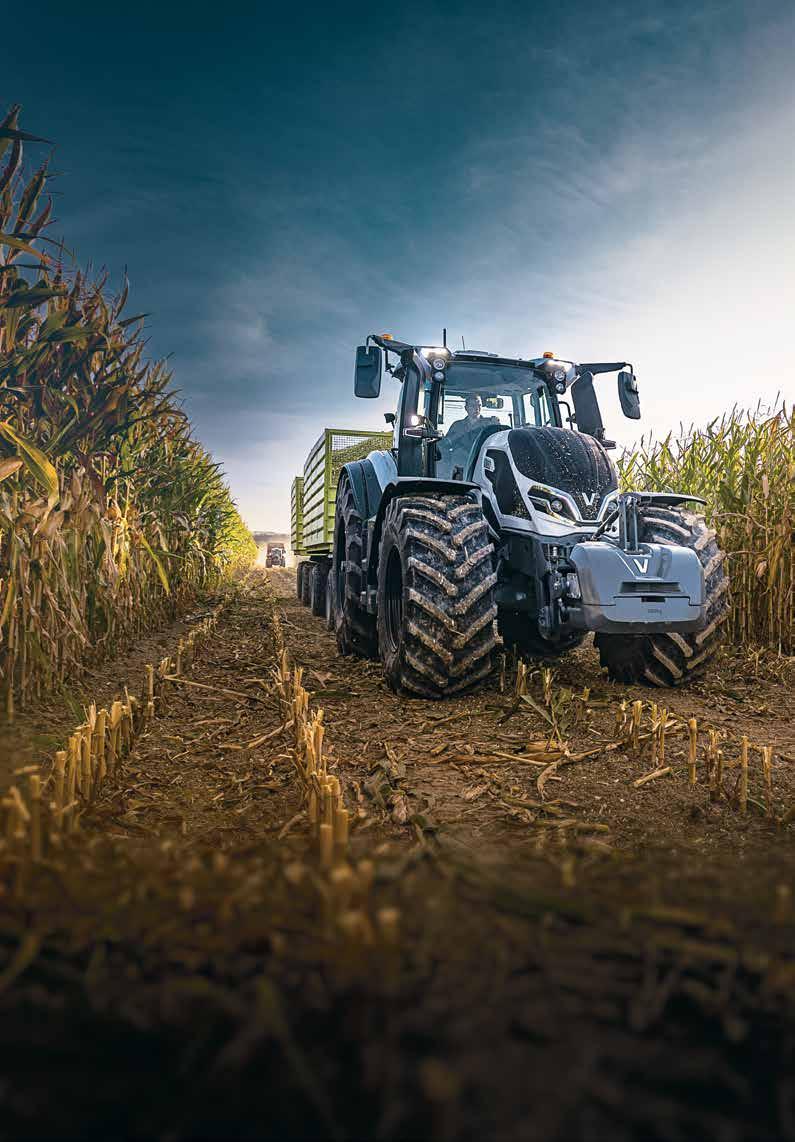
O’Brien adds that while sales volumes themselves are down, sale values are holding steady.
He says the median price paid across all sectors is up by 5%.
“This shows that buyers, although being cautious will pay a good price for the right property that meets their needs,” he says.
FINALISTS HAVE been named for 2023 Cooperative Business NZ Annual Awards.

Following another bumper year of award nominations, the independent judging panel has named the finalists. The judges say that it is fantastic to see so many nominations of exceptional calibre highlighting the work of New Zealand’s member owned business community and their people.
For the Co-operative / Mutual of the Year award, Farmers’ Mutual Group (FMG) and SBS Bank are in the running.
There are three finalists for the Leader of the Year award: Peter Hendry (CEO, MG Group), Bindi Norwell (group chief executive, ProCare), and Mark Wynne (outgoing CEO, Ballance Agri-Nutrients).
Four people are in the running for the Lifetime Achievement Award: Danny Hailes (general manager Livestock & Shareholder Services, Alliance), Murray King (chair, LIC), Dr Ants Roberts (chief scientist, Ravensdown), and Mark Wynne (outgoing CEO, Ballance Agri-Nutrients).
The Enduring Service Awards provides an opportunity to celebrate the longevity and resilience of the co-operative and mutual models.
Full members who have reached a milestone of 25, 50, 75 or 100 years operation as a co-operative or mutual are awarded an Enduring Service Award in this non-judged award category.
The winners will be revealed at the Awards Cocktail Evening hosted in Wellington in October.
 SUDESH KISSUN sudeshk@ruralnews.co.nz
SUDESH KISSUN sudeshk@ruralnews.co.nz
FARMERS MUST wait until next the next season to see a lift in farm profit margins, says Westpac senior agricultural economist Nathan Penny.
While farm input inflation is receding, the lower milk price remains the dominating factor on many farms.
Penny says for many farmers, this season’s milk price is likely to be below their break-even point.
“Indeed, even after taking account of the cost-cutting measures that farmers are likely to take, DairyNZ’s updated breakeven milk price esti-
mate is around $7.50/kg,” he says.
Break-even estimates vary widely by farm - and in the calculation method - so that some farms may have larger deficits, while some may still even be in surplus.
However, there are some offsets in play, notes Penny.

“The recent payout from the sale of Fonterra’s sale of its Chilean business has added $0.50/ kgMS back into Fonterra farmers’ cashflows, at least, if not their farm profits.
“Also, Fonterra is set to pay a relatively healthy dividend in October of circa 40c/share.
“The other potential source of relief is falling
on-farm input inflation.
Annual dairy farm input inflation was running as hot as 17% in the middle of last year. Now as at the June 2023, annual input inflation has fallen to 7% - by the end of the year, we expect to fall to the 3% to 4% range.
“If anything, given the pace of declines to date and subsequent feed and fertiliser price reductions, input inflation could be close to flat by the end of 2023. Those factors aside, the lower milk price is still the dominating factor. Indeed, improvements in farm profit margins are likely to need to wait until the 2024/25 season. For this season, it means that for many farmers the focus is likely
to be on loss minimisation.”
ANZ agri economist Susan Kilsby agrees that the breakeven point varies from farm to farm, but achieving a profit will require careful cost management and efficient expenditure relative to production, and for many farmers, will be beyond reach even then.
She points out that dairy markets typically go through these cycles, but focusing on what can be done, asking for assistance from advisors and keeping cashflow forecasts updated will be imperative.
Dairy farmers across the globe will be finding the current environment challenging, she says.
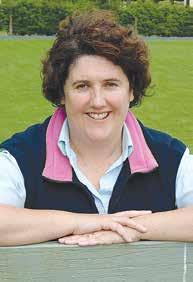
“New Zealand does have greater volatility in farmgate milk prices than most other countries due to its higher exposure to global markets.
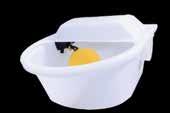
“Domestic prices tend to be more stable, and in countries with large domestic markets such as the US, Europe and to a lesser extent Australia, domestic sales buffer exporters to some degree against fluctuations in farmgate prices.
“But New Zealand farmers can generally produce milk more cheaply than in those countries. The low prices will mean global milk production eases, which will help rebalance the market, although not quickly.”
DAIRYNZ HAS revised its breakeven milk price, as one way to help farmers navigate the challenging economic conditions they face this season.
DairyNZ head of economics, Mark Storey, says many dairy farmers will be finding the current milk price and inflation issues difficult to take, and how to navigate this season’s reduced income will be causing real concern on many farms.
“We know dairy farmers have a difficult season ahead, in light of the reduced milk price and continuing high farm costs,” says Storey.
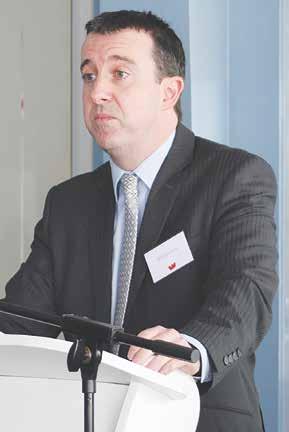
“The breakeven milk price is one tool we have to support farmers right now, as it helps identify and forecast average costs.”
DairyNZ forecasts a national breakeven of $7.51/kgMS for this season, down from $8.16/kgMS. This
figure reflects the changes farmers are making now.
“The updated breakeven milk price
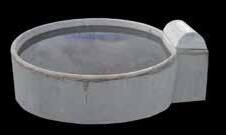
reflects that farmers are working hard to reduce their spending in the face of extremely high costs. We know farmers are looking at budgets lineby-line and analysing where spending can be reduced, including pausing non-essential capital expenditure and carefully evaluating feed, fertiliser and other spending,” says Storey.
The breakeven milk price of $7.51/ kgMS is above DairyNZ’s forecast revenue of $7.34/kgMS for the season, and above Fonterra’s midpoint forecast of $6.75/kgMS. This means some farmers will make a loss this season, so the focus will be on maintaining business viability.
“This will also have significant flow-on effects to New Zealand’s regional and national economy.”
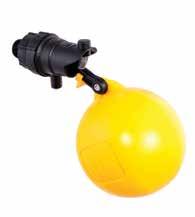



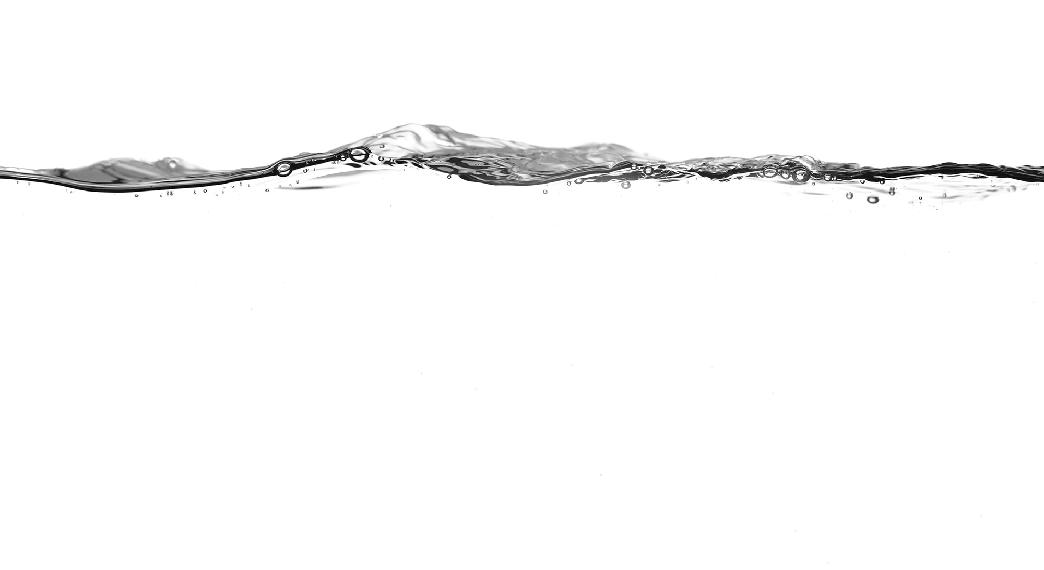
The new forecast is published on the DairyNZ Econ Tracker and
expressed as a national average, which does not necessarily reflect individual farm situations. An estimation of breakeven price by region is also presented on the Econ Tracker.
“Every farm is different so we encourage farmers to look at their own situation and what changes can be made,” says DairyNZ general manager of farm performance, Sarah Speight.
“Given the further drop in the Global Dairy Trade this week we are looking at 12-18 months of reduced income, so it is important to consider changes carefully.”
Farmers are encouraged to talk with their farm teams, advisors and DairyNZ regional teams for support and advice.
“DairyNZ will continue working with farmers to support them
to remain viable this season. This includes running events where farmers can hear from others on how they are managing costs and are focusing on farming as efficiently as possible,” says Speight.
“The Econ Tracker is also a useful tool to help farmers understand the current economic environment, to support their budgeting and farm business planning.”
New Zealand dairy farmers are resilient and accustomed to managing volatility, but the current combination of conditions will be difficult for many. Farmers should connect with their farm teams and neighbours and reach out for advice and support as needed, including calling Rural Support Trust on 0800 787 254.
THIRTEEN DAIRY farmers have put their names forward for two DairyNZ board positions.

The list includes current chair Jim van der Poel, former Fonterra Cooperative Council chair James Barron, South Island agribusiness leader Jessie Chan, former National MP Shane Ardern, and Federated Farmers Southland executive Jason Herrick.
Other candidates are Bryan Pedersen - Foxton, Gray Baldwin - Putararu, Paul Manion - Morrinsville, Seamus BardenAuckland, Jeremy Savage - Ashburton, Cameron Henderson - Swannanoa, Stu Muir - Aka Aka and Conall BuchannanPaeroa.
This year two DairyNZ directors retire by rotation: Dairy Holdings Ltd chief executive Colin
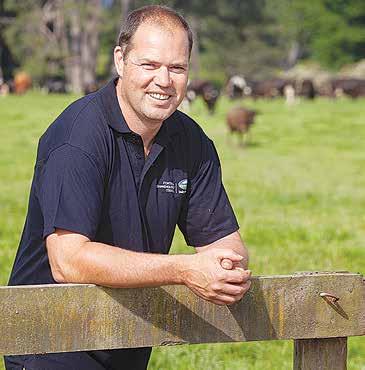
Glass is not seeking reelection.
However, chair Jim van der Poel is vying for another three-year term.
Voting starts on September 11. Levy paying
dairy farmers will have the opportunity to vote for their preferred candidates.
Electionz.com returning officer Anthony Morton says that farmers
have until noon Tuesday, October 10, to cast their votes.
“I am encouraged by the number of candidates who have been nominated to fill these
vacancies, and now is the opportunity for dairy farmers to have a say in who they want elected to the DairyNZ board,” says Morton.
“When dairy farmers

receive their voter packs, I encourage them to read the profiles and consider who they believe will represent their views and make the best contribution to the board.”
DairyNZ levy payers will receive a vote pack in the mail from September 11 and can vote online or by post.
DairyNZ’s board consists of five farmerelected directors and three board-appointed directors.
Meanwhile, one nomination was received for a Directors’ Remuneration Committee position, which reviews and recommends changes to directors’ payments and other benefits to directors each year.
As only one vacancy exists, Robbie Byars of Winton will be appointed as a committee member at DairyNZ’s annual general meeting.
Successful board candidates will be announced at DairyNZ’s annual general meeting on October 11 in Te Awamutu.
FEATURE: 19 September BOOKING DEADLINE: 6 September MATERIAL REQUIRED: 12 September
To be in this special report contact your advertising representative now to promote your products and/or service to all NZ dairy farmers and sharemilkers.
While the pasture growth is strongest, hay and silage must be made and collected. Equipment must be reliable and productive.



speciality cheese making industry.
Just a few months ago
three other major cheese awards.
North.
THE SUDDEN death of champion cheesemaker Adrian Walcroft has sent shockwaves through the
Walcroft won the top award at the annual NZ cheese awards and Cartwheel Creamery, which he and wife Jill ran, won

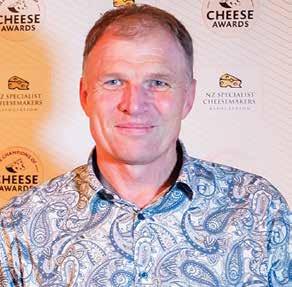
This included the artisan supreme award. Their cheesemaking business is based on a small property in the Pohangina Valley just outside Palmerston
Walcroft was a climate change scientist with Landcare Research before turning his hobby of cheesemaking into a full time and very successful business. He famously did
a cheesemaking course in 1996, the week before his wedding to Jill.
His wife Jill told Dairy News in an interview a few months ago that there was a certain attraction in running their own
business and interacting with people as opposed to writing science papers. An early decision the couple made was to not produce their own milk, rather to source cow and goat milk from local farmers and just focus on making cheese. They built their own plant from scratch.
Cartwheel produces a wide range of artisanstyle cheeses including camembert, blue mould, traditional tome, soft washed rind, Feta style and halloumi style. They sell their cheeses at farmers markets, some big shows and events and also to restaurants, some retail outlets and online.
Jill described Adrian as a bit of a perfectionist, with an eye for detail and a passion for making food.
The chair of the Specialty Cheese Association, Simon Lamb, told Dairy News that his colleagues in the industry are shocked at the news of Walcroft’s death.
“There is a real sadness throughout our membership over his
sudden death,” he says. Walcroft was on the governing board of the Speciality Cheese Association and led the regulation sub-committee.
Lamb says in this role he was dealing with MPI, the dairy industry bodies and he was focusing trying to get a better deal for the smaller operators and bringing down the cost of compliance.
He says compliance is a huge part of their cost of production for the smaller operators. Walcroft was also looking into the whole auditing process for the industry. In the 10 years in the industry he used his science background to good effect and Lamb says the awards he received were worthy of a person who contributed much to the sector.
“As well as being an amazing cheesemaker, Adrian was a really nice person. He was quietly spoken but when he spoke people listened because he always had something interesting and worthwhile to say.”
$2.5m
NEW ZEALAND Rural Land Co (NZL), which leases out highly productive farms, made a net profit after tax of $2.5m last financial year.
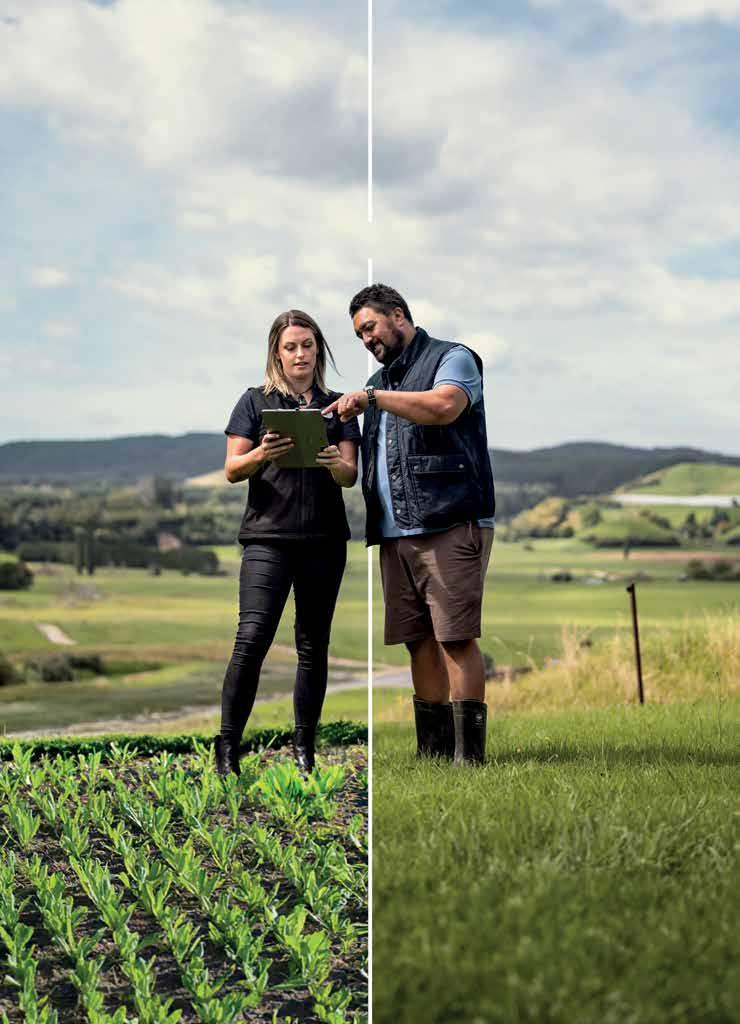
NZL owns 14,487 hectares of productive rural land in New Zealand which it says is fully tenanted on long-term leases with regular CPI adjustment provisions.
NZL says it generates shareholder value through a combination of asset value appreciation and cash flows from its long-term leases.
NZL chair Rob Campbell says its strategy is to own quality rural land in New Zealand, and to grow and diversify its portfolio while delivering attractive risk-adjusted returns.
“NZL’s leases incorporate regular, uncapped, CPI reviews.
“This means higher inflation results in higher than anticipated rental growth. NZL is insulated from inflation-impacted and all other operational on-farm costs by owning only the land,” he says.
takes the co-operative’s 2023 net profit after tax from continuing opera tions to $2.9 million.
FERTILISER CO-OPER-
ATIVE Ravensdown says farmers bought 27% fewer products last financial year as prices soared.

Announcing its annual results, the co-operative noted while farmers’ annual spend remained constant, tonnage sold dropped from 1.2 million tonnes the previous year to 895,000 tonnes for the financial year ending May 31, 2023.
It ended the year with a net profit before tax of $429,000. A tax benefit
Reported revenue of $977 million includes insurance proceeds for flood damage and a fire at the co-operative’s Napier plant and is on par with last year’s reported rev enue of $922 million.
The co-op is not paying a rebate to shareholders.
Ravensdown chief executive Garry Diack notes that it is a challeng ing period for traditional farming practice.
Diack says Ravens down’s policy has been to deliver competitive pric
ing throughout the year, not in a position to “We have also undertaken specific initiatives to reduce operating expenditure through a review of the organisation’s capital expenditure and overhead costs.”
Despite the difficult operating environment, Ravensdown has maintained a strong focus on working capital, with tighter inventory management and reduced supply chain volatility resulting in a positive $119 million cash turnaround from the previous financial year. Stock
impairment at year end is $4.2 million.
Bruce Wills, Ravensdown chair, noted the coop’s ongoing focus on balance sheet strength within this high cost and low profitability environment.
“This year’s financial results, which include an improved equity ratio from 62% to 74%, has highlighted the importance of a conservative approach to managing the co-operative’s balance sheet.
“While external factors throughout 2023, such as Cyclone Gabrielle and increasing farm input

costs, put pressure on cashflow and profitability, equity levels remain robust.
“Within a broader operating environment, we have seen signs that current fertiliser prices will maintain their stability through spring.”
Ravensdown continued to invest in technologies and partnerships to bring future scale benefit to customers and shareholders, such as the sustained development of HawkEye, AgriZeroNZ for greenhouse gas reduction technologies, and the new commercial venture arm, Agnition.

ANIMAL AND Plant Health
New Zealand has appointed Dr Liz Shackleton as its new chief executive.
She takes up her new role on October 30.
Shackleton has been leading the DairyNZ Biosecurity team, including the Mycoplasma bovis Programme team since 2018, and held leadership roles in the pharmaceutical sector after starting her career as a rural veterinarian.
She is a chartered member of the NZ Institute of Directors and a board member of the NZ Veterinary Council.
“I’ve been privileged to spend my career supporting the primary sector - from gumboots to boardroom - and am passionate about the
important role it plays for New Zealand,” she says.
The primary sector generates $55 billion in export earnings, and the membership association works closely with government agencies, industry groups, and other stakeholders, to help bring the necessary innovations to manage pests and diseases so that NZ food can be grown sustainably, efficiently and effectively.
Co-president of Animal and Plant Health NZ, Vanessa Macdonald, says Shackleton will be instrumental in implementing the recently rebranded organisation’s strategy which prioritises safeguarding the sustainability of agriculture through ensuring the health of crops and animals.
“Liz’s leadership will empower New Zealand’s farmers and growers with innovative solutions and best practices, reinforcing their position as frontrunners in producing safe, healthy, and sustainable food for a discerning global market,” adds Macdonald.


Shackleton is excited about the opportunity to lead the organisation, given the critical role that healthy crops and animals play in safeguarding our sustainability.
“Growing our people, credible science and supportive regulations all play a key role in bringing innovative solutions to the market for members. I look forward to continuing to build on the good work Mark Ross and team have done so far.”
NOT SO long ago, a payout starting with a six would have been happily accepted by the dairy sector.

Today – with input inflation running rife and interest rates showing no signs of abating – a payout starting with eight is the new norm.
That’s why Fonterra’s latest announcement – bringing the season’s mid-point down to $6.25/kgMS – is a worrying sign.
The election run-up is on and things are getting nasty. Operatives from both sides of the political centre are airing out the ‘dirt files’ they have been sitting on to ankle-tap political opponents. The self-appointed morality police that are NZ’s political reporters happily play along, largely ignoring policy-based stories (hard work) in favour of ‘gotcha’ character judgement stories (not hard work).
So far, voters have heard that NZ First harbours at least one candidate so far down the rabbit hole that they believe Covid vaccines continue to emit signals from the grave; an Act MP thinks (or once thought) that vaccines caused drownings; Te
Pati Māori have had to apologise for their assertion that Māori are genetically superior, and that indigenous people should get housing priority over migrants.
PM Chippy has also demonstrated Labour will run a negative campaign, so the gloves are off and we’ll see more of the mud-slinging before polling day. Grab your popcorn and settle in!
TEN OUT of ten points for Agriculture Minister Damien O’Connor for his confidence of winning the upcoming general election.
On a recent visit to India, O’Connor talked about “a regular pattern of Ministerial and Prime Ministerial engagement” between the two countries.
“While I hate to say it, I think we can learn a thing or two from our cousins across ‘The Ditch’. Sustained engagement between Prime Ministers and Ministers from both governments has been a critical part of the step change that Australia achieved in its relationship with India.
“Prime Minister Hipkins has already announced his intention to visit India after our elections.”
We believe this comment would have raised a few eyebrows in Delhi.
IT’S ELECTION season and Greenpeace is banging the old drum again – ‘kill the dairy industry’.
It’s now calling on all political parties to step up and commit to bold and urgent climate action - code for reducing the number of cows.
With NZ knocking on the door of a recession, Greenpeace wants to kill the cow that gives the white gold which sells around the world for billions of dollars every year. Without those dollars, we’d be broke.
Sorry Greenpeace, all political parties support a safe and stable climate and healthy environment. The difference is, they are all working alongside farmers to find scientific solutions to reduce greenhouse gas emissions, rather than shut them down.
IS THE Chinese dairy slump coming to an end? Yes, according to one of the China’s biggest dairy companies, Yili Industrial Group.
Yili expects to record a modest gain in sales this year as China’s dairy consumption is recovering after a post-Covid slump. From July to August, Yili’s revenue from its liquid milk business climbed by around 5% from a year ago, and the second half is expected to be better than the first six months of this year. Since July, liquid milk has been in high demand again and a multi-year slowdown in the firm’s milk powder business is also showing signs of bottoming out. It’s early days, but Yili’s announcement would bode well for NZ dairy exporters who rely on China for much of its sales.
Last season, dairy farmers produced 1.39 billion kgMS, so with the midpoint dropping $1.25 that is almost $1.8 billion not coming into the country’s economy. And this doesn’t just affect Fonterra suppliers. Other milk processors are also facing the heat. NZ’s peak milk season could make things worse.
The key driver of the weak short-term price outlook is weak Chinese demand, noting that China is comfortably our largest dairy market.
Unlike most economies post their Covid lockdowns, China’s post lockdown bump in economic activity has underwhelmed expectations.
Analysts have cut their outlook for Chinese economic growth for 2023 from 6.2% in June, to 5.7%, and then to 5.2%.
Many dairy farmers are bracing for losses and making changes to the way they farm, and hoping the market will rebalance.
Global milk supplies are subdued and very likely to contract further as farmers globally are not making money at current farmgate prices.
Any tightening in supply will help rebalance the market, but we are now heading into peak seasonal supply for the Southern Hemisphere dairy-exporting nations.
New Zealand’s spike in milk supply in the coming months means there will be more product to sell in the near term, while the market is still weak.
Ironically, this could lock in a payout starting with a six.
Publisher: Brian Hight Ph 09-307 0399
General Manager: Adam Fricker Ph 021-842 226
Editor: Sudesh Kissun Ph 021-963 177
Machinery Editor: Mark Daniel Ph 021-906 723 markd@ruralnews.co.nz
Reporters: Peter Burke Ph 021-224 2184 peterb@ruralnews.co.nz
Subscriptions: Julie Beech Ph 021-190 3144 Production: Dave Ferguson Ph 027-272 5372
Becky Williams Ph 021-100 4831 Digital Strategist: Jessica Marshall Ph 021 0232 6446
Agriculture and Trade Minister Damien O’Connor was in India recently as part of a trade delegation. He gave a speech to the Confederation of Indian Industry in New Delhi. Here’s part of what he said:
THE CASE for New Zealand doing more with India is clear. India is an important partner for New Zealand in the IndoPacific.
India is moving closer to key partners in the region, including Australia, the US, and Japan as well as our neighbours in South East Asia. India’s interest in the South West Pacific is also growing and we welcome your engagement.
As we look to step up our relationship, we are mindful that “India is different and requires a different approach”. This message came through loud and clear in the India-New Zealand Business Council’s insightful report.
If we have learned anything over the last 10 years, it’s that a short term, narrow and transactional approach won’t work with India. We need to understand that India sees its relationship with New Zealand in broad terms.
And we respect this.
The political, defence and security, people-topeople, cultural and economic elements of the relationship are all linked. Our relationship with India has these partnerships at its core; the reason we are together is our shared history and our shared values.
Trade is not just a transaction. Trade is sharing that flows from these human connections.
As a Government, we have been working on building a holistic relationship with India.
Our economic cooperation needs to be based on mutual benefit. This means supporting India’s development aspirations in a way that benefits both countries’ sectors.
Let us also not forget the significant potential for Indian exporters to New Zealand. Our market is small but it is also
sense to be pulling in different directions.
Rest assured you have the commitment of the New Zealand Government to take the agenda
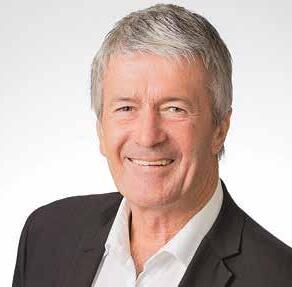
forward. I am confident that by working together we can lift the IndiaNew Zealand relationship and partnership to new heights.
India is different and requires a different approach, says Trade Minister Damien O’Connor.
high value and well regulated. With only US$700 million in imports from India, each year there is room to grow.

One call that has come through clearly from the business community is that we need to be present in India. New Zealand, as the smaller partner, needs to put the effort in.
As a Government, we can support you and the relationship by ensuring a regular pattern of Ministerial and Prime Ministerial engagement.
While I hate to say it, I think we can learn a thing or two from our cousins across ‘The Ditch’. Sustained engagement between Prime Ministers and Ministers from both governments has been a critical part of the step change that Australia achieved in its relationship with India.
In discussions with my counterparts, I am cementing in the idea that we need to meet annually.
We also need to see more New Zealand Ministers from other portfolios visiting India.
This builds on the visits by Ministers of Foreign Affairs and Food Safety, as well as my own visit, all of which have taken place over the last 12 months.
These visits are backed up by the work of officials. We have an active and committed High Commission in India and staff from a range of agencies across South Asia who will be critical to providing the bridge to the Indian Government.
A range of arrangements that underpin our relationship are also under discussion on defence cooperation, air services, and customs.
It is clear too that we need to work together as government and business communities in both countries. It makes no
www.ruralnewsgroup.co.nz
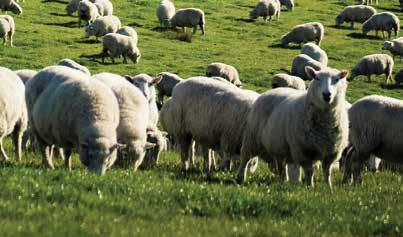
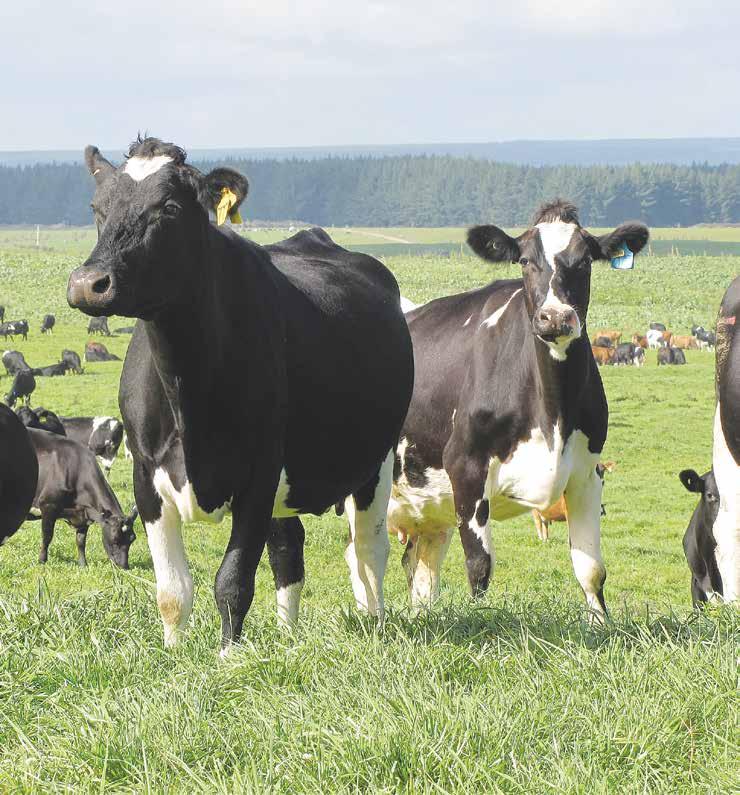
WEST COAST dairy farmers Grant and Shona Hanna are looking forward to showcasing their Holstein Friesian cattle once again as the show season returns after a few years of disruption.
And it’s not only the couple that has missed the show circuit but show patrons too.
“The locals have commented that the shows aren’t the same without stock,” says Grant.
“The visitors to the Hokitika A&P Show love seeing the animals. It is a great place to educate townspeople, kids and tourists about dairy farming and our practices in a relaxed environment.”
Grant grew up in Korere, St Arnaud on a lifestyle property where he “spent most of his time on his neighbour’s sheep and beef farm, avoiding school.”
Shona grew up in the Rai Valley on her par-
DESPITE THE disruptions of M. bovis and Covid-19 over the last few years, the Hannas enjoy showing at local events.
“Before the M. bovis scare we would take the young stock and two in-milk cows down to the Westland A&P Show at Hokitika and the South Westland Show at Whataroa,” says Shona.
“Two floats-full was enough work for us to handle! We had a few on-farm shows locally in the last couple of years which was great, but when you’re on farm you can’t compare your animals with those of other breeders. Shows are great ways to showcase our stock.”
One stand-out show animal was Milkmore Shamrock Gissy VG89, who was out of a cow the Hannas got from Cresslands, Cresslands Lucas Gissy VG88.
ents’ dairy farm, Harvest Holstein Friesians (John and Pam Harvey), and is a proud fifth-generation dairy farmer.

Today, Shona and Grant milk 380 cows on 167ha effective at Mawheraiti on the West Coast. They lease the property from Will and Christina Sturkenboom. The farm, which is 185ha total, includes 45ha of freshwater K-Line irrigation and 25ha of effluent K-Line irrigation.
They finished their first season at this farm, having 50/50 sharemilked 10km down the road at Totara Flat for the previous 10-11 years.
All stock is wintered on the Mawheraiti farm, fed on 16ha of crop and baleage, with PKE fed to the heifers as well. Calves go off-farm for grazing, returning as R2s on May 1.
Approximately 200 of the 380 cows are purebred Holstein Friesian, with 50 pedigree Ayrshires and crossbred cows making up the balance.

The couple increased their herd size by 100 cows last season, when they shifted farm and upsized.
The herd averages 165,000 kgMS, but with a
dry period that ran threefour weeks longer than usual, they are hoping for 150,000 kgMS this season.
“Being the first season, we are finding our feet a bit as the ground is quite heavy compared to Totara Flat’s river silt loam,” Grant says.
With in-shed feeding on the new farm, they feed 1kg/cow/day of Milkmaker pellets; when they get really dry, they feed 2kg of PKE as well.
Calving started on August 1, with the couple keeping all AI heifers.
“Our heifer grazer loves our cows, so we have been rearing 10 beef-cross calves annually to help him grow his beef herd,” says Shona.
Mating starts October 28, which comprises
five weeks of AI and five weeks of Hereford bulls to follow up; bulls are out by January 10.
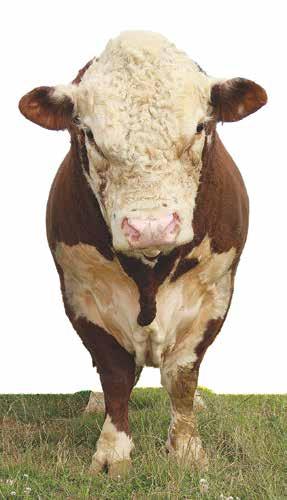
When choosing semen, Shona says they select for good components, fertility, stature, strength and longevity. A medium-sized Holstein Friesian that lives to a reasonable age is the central goal.
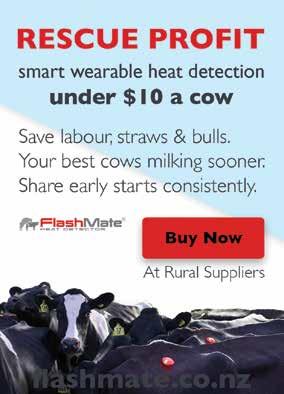
“You’ve got to make it worthwhile. If they last to 10-12 years old – although we do have a few 14-yearolds – we’re happy with that.”
Bulls that have performed well on farm in the past include Coldspring Kenyon, CoastalView Mookie-ET, sons of Mountfield SSI DCY Mogul-ET and sons of O-Bee Manfred JusticeET (Oman).
“At the last show Shamrock went to as a calf she cleaned up all classes, including All Breeds Champion.” Shona says now things are back to normal, it would be awesome to see more families in the region start to head back to local shows.
She says the Hokitika A&P Show is very “grassroots” compared to some others.
“We don’t spend days fitting the cattle,” she says.
“It is a very old-school way of showing; a basic and a true representation of our breeding of the animals.”
“With sons of Oman you can guarantee you’re going to get a good, allround cow,” Shona says.
“You do have to outcross after a couple of years though, due to his prolific nature in New Zealand.
“Most of our top-performing cows in the herd are from sons of Oman; Milkmore Overd Dina S3F VG88 did 520kgMS at 10-years-old, and Milkmore Kenyon Linda S0F VG85 (sired by Coldspring Kenyon) did 546kgMS at six-yearsold.”
Ruti Appleboy-Red has also created some lovely
cows in the herd.
“We can put him over a crossbred cow, and then put them back to Holstein Friesian. He’s also an easy calving bull, which is great for heifers, and has good udder traits.”
New bulls coming through the herd this season include Hul-Stein Cowboy, and Westcoast Perseus.
“We thought we’d try Perseus as he’s got a good backing behind him now,” says Shona.
Shona says when they first started sharemilking they got some good lines from her parents’ herd.
AS FARMERS look ahead to mating in the wake of a downgraded forecast payout, CRV managing director James Smallwood says getting cows in calf will be fundamental.
“It’s not the season for high empty rates,” Smallwood says.
He points out that lactation length will be more important than ever to make sure farmers maximise days in milk.
“Making sure cows are in good condition before mating to help nail 6-week in-calf rates will be crucial.”
In addition to accurate heat detection and putting up cows for AI at the right time, Smallwood says farmers need to be sure they are mating the right cows to the right bulls.
“On average, herd improvement only makes up about 2.8% of dairy farmers’ costs of production per kgMS, which is not much when you consider that the success of a farm business hinges on getting cows in calf.
“Your herd is one of your most important assets. You need to nurture that asset and invest in maintaining its condition so you can capitalise when the market recovers.
“But that investment needs to be spent wisely. It starts by herd testing to identify the best animals to rear and mate. Without that information, you’re flying blind and leaving things to chance. That’s a risk dairy farmers can’t afford to take right now.
FROM BEING suited and booted in the glamorous world of advertising, to wearing red bands and overalls in cow sheds across the Waikato, Julia Baynes’ new role is the perfect meeting of two worlds.
Baynes is CRV’s new national sales manager. A former advertising executive, she cut her teeth at global marketing agency Saatchi & Saatchi, but just over a decade ago hung up her high heels to retrain as a large animal vet. For the past six years she has been working for Anexa Vets in Waikato.
Now she can combine her sales and marketing savvy with her love of cows and the deep understanding of dairy farming she has gained as a vet.
While she counts Spark, Barclays Bank, British Telecom and Diageo Highland Whisky as former advertising clients, Baynes says working in dairy genetics is one of the most
“At CRV, we talk about breeding healthy and efficient cows that last longer in the herd. Now’s the time, more so than ever, to make sure the cows farmers are breeding are low-mainte-
exciting futures, with so much of the industry’s success resting on herd improvement.
“I want to help breed better herds for all the reasons we hear about: The quality of our milk, the quality of our beef and the environment. I see it as a great opportunity to bring my skill sets together to help New Zealand farmers realise the potential from genetic gains,” says Baynes.
It was while working as a vet in Waikato, she learned that every dairy season follows the same pattern, and she started looking for a way to use her wide range of skills for the benefit of the industry.

“I came across the advert for the sales and marketing role at CRV. I realised I couldn’t think of a more perfect way to combine all my skills, working in a sales and marketing role with farmers who I have come to know well and still having contact
nance. Ones that are efficient converters of feed into milk and are robust enough to last the distance.”
As dairy farmers continue to look for ways to remain profitable and
deal with rapid change, CRV has seen an increase in demand for sexed semen and dairy beef over the last few seasons. Smallwood expects that trend to continue.
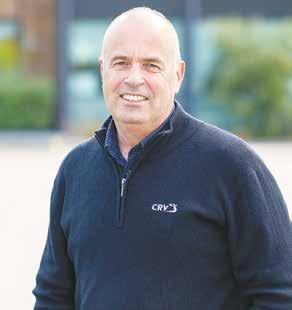
“We have seen a real shift in buying behaviours as farmers seek to minimise waste through good management and ensuring their animals are healthy, last longer, and turn as much grass as possible into milk.

“Right now, dairy beef could also be an option as farmers look for ways to generate an alternative income stream next year when the return from their milk could be lower.
“By being strategic around the products they use and how they identify their cows for AI, they can give themselves more

options going into the next season.”
News of the forecast payout dive has been followed by a plethora of ‘doom and gloom’ commentary in the media and online. Smallwood prefers to take a glass half full attitude.
“Positive news about Fonterra’s forecast dividend and insights from some industry commentators should give us reason to be optimistic,” he says.

“As a dairy farmer myself, I recently received an email update from the general manager of BNZ Agribusiness, David Handley.
“He encourages us to remain positive and remember that agriculture is cyclical and will bounce back.
“He believes there is relief coming with fertiliser and feed costs falling, a greater supply of people in the labour market, and strong signs that we are reaching or have reached the peak of the interest rate cycle.
“While it’s certainly unsettling times for dairy farmers across the country, it is also an opportunity for them to hone their herd improvement and use genetics as a tool to help protect their business long term,” says Smallwood.
“When the going gets tough, we know dairy farmers dig deep to find solutions, lean on those they trust, and think outside the box. This is one of those times.”
I was mad. They had only seen me suited and booted.
“I’m originally from the fine dairying capital of Wellington. Farms to me had always been somewhere you visit and feed animals from rice crispy bags! I had no idea how dairy farms worked, but I thought it was an interesting world.”
The more time she spent learning the more she realised she loved the physical and intellectual side of farming.
control, from the weather to the payout. Managing all that requires serious skills and expertise. When I became a vet, I knew I would be working with some smart people that would teach me things.”
As well as the wealth of learning she enjoyed as a vet, Baynes also discovered how much she loves cows.
with cows,” she says. Bayne’s experience as a vet opened her eyes to the complicated nature of farming as a business and she realised just how much depth there is to what farmers do.
“When I told my friends I was retraining as a vet they all thought
She now lives in Matamata with her husband Daniel, three dogs, cats and birds she acquired during her time as a vet. She says she can’t imagine living anywhere but rural New Zealand.
“New Zealand farmers have to be smart because their businesses are running on a knife edge the whole time,” says Baynes.
“So many things are out of their
“Cows are some of the best animals you can meet. They’re lovely and gentle, and they have a great sense of humour that really appeals to me.”
She says CRV’s job is about more than just getting cows in calf.
“What we do here at CRV is not only for the benefit of farmers, but also consumers, the animals themselves and the environment.
“By breeding healthier, more efficient cows we all win – the farmers, the wider community, and New Zealand.”
THE MOST profitable maize silage crop is the one which delivers the highest amount of energy per hectare. To achieve this, crop establishment is critical as maize silage and grain yield are greatly influenced by plant population.
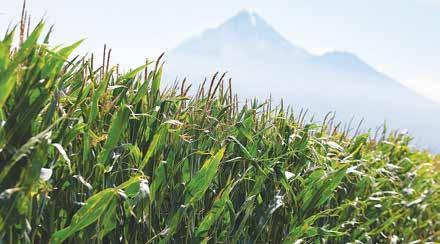
Uniform stand emergence ensures each plant can grow to its full potential and deliver a high grain yield.
Planting date is an important factor in establishing a good maize stand. As the maize planting season draws near, there is always the excitement to get out and get
started. But before you decide on the optimum planting date, there are several factors you should consider because the ideal date will vary by season and location.
Planting should only commence if soil temperatures within the top 5cm
are warmer than 10˚C for at least a week. Cool soil temperatures can cause seed membranes to rupture, providing an entry and food source for soil
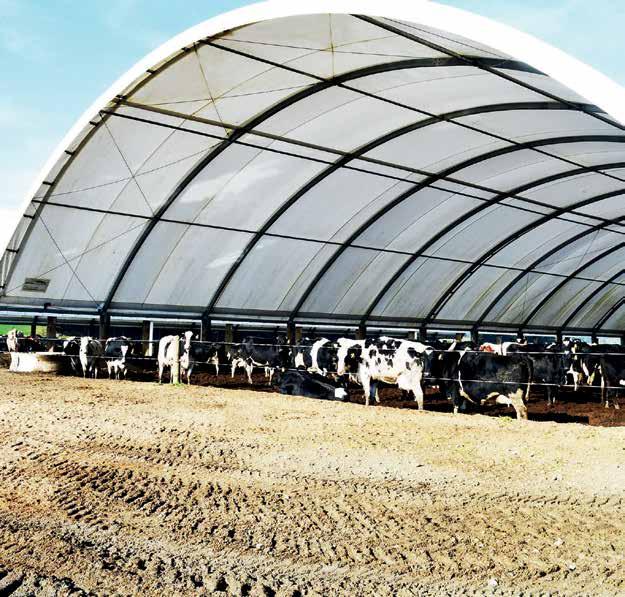
These shelters have definitely made dairying more enjoyable. If you come to work and see your cows happy and your staff happy, it makes everything easier.
borne pathogens. This will consequently reduce plant stands, decreasing potential yields. For germination to occur, maize seed needs to absorb moisture. If seed absorbs cold water within the first few hours of planting, the germ of the seed can be damaged. This reduces metabolism and vigour, increasing sensitivity to herbicides and other chemicals. Ide-
ally, aim to plant when there are greater chances of the paddock experiencing at least 48 hours of warm, moist conditions after planting.
When there is a forecast for bad weather, it is best to delay planting until the bad spell has passed. Planting into damp, cold soils, or just before an adverse weather event, could potentially be damaging to a successful maize crop establishment.
It is important to consider crop establishment method. Cultivating aerates, dries and warms
90-100 percent range with only five paddocks (3 percent) having a field emergence less than 90 percent. Mean crop establishment was 97 percent in both seasons.
There was no difference in the establishment of crops planted into conventionally cultivated or strip till seed beds, but no till or direct drill paddocks had a slightly lower seedling establishment (Table 1).
*Means with different superscripts are statistically significant (P<0.05).
Soil type will impact planting time largely because sandy soils are usually much more forgiving than heavy soils because they are normally free draining and tend to dry out faster. Temperature fluctuations for sands tend to be greater, particularly on clear nights with cold air temperatures, which is why it is important to check soil temperatures prior to planting.
The amount of surface residue in the paddock
is key for setting up your next season’s crop.
Seed bed preparation can be challenging especially for wet pasture paddocks. Delaying cultivation until the soil has dried out is always a better option than creating clods and then trying to break them up.
While a fine, even seedbed is the gold standard, our field study showed that there was no difference in the establishment of Pioneer brand maize seed planted in excellent vs. acceptable seed beds (Table 2).
The current recommendation is to plant 5 percent more seeds than the desired final plant population. This appears to be adequate for crops being established into well prepared seed beds using conventional cultivation or strip till. Where the seed bed is poor, the crop is being established via direct drill or no till, or planting is very early, growers should consider increasing the seeding rate even further.
the soil and removes the food source for slug and snails. Crops established by direct drill tend to encounter wetter, cooler growing conditions and there is often higher slug and snail pressure. These factors can negatively impact seedling germination and establishment.
A recent study conducted by Pioneer brand seeds measured the field emergence of 156 commercial maize grain and silage crops planted from Northland to Canterbury in 2021 and 2022. The results of this survey showed that field establishment of the maize seed was typically in the

will also influence the ideal planting time. Dense residue will encourage soils to hold moisture longer and cushions the soil from direct heat from the sun, resulting in lower soil temperatures. This could promote seedling diseases particularly in poorly drained paddocks.
Crop residues can also potentially lock up soil nitrogen. In grain crops where high levels of residue exist, consider using residue clearers on the planter to remove residue from seed furrows allowing quicker and more uniform emergence. Residue management post-harvest
The best way to approach your planting this season is to have a date range (window) that allows flexibility to plant to the conditions. It is almost always better to wait for ideal planting conditions even if that means waiting another week or two. Monitoring soil moisture, temperature, and weather forecasts is key. The best yields are achieved when soil temperatures are consistently at or above the minimum for germination and growth.

THE NUMBER of kingfishers, fantails and other native birds are increasing on Mark and Devon Slee’s Canterbury farm, thanks to extensive planting in recent years.
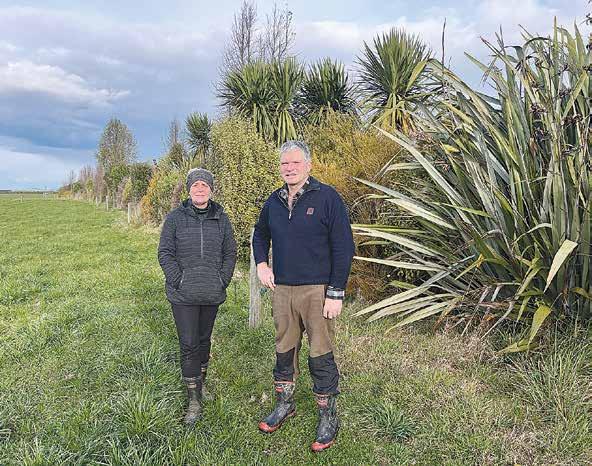
The Hinds farmers have planted more than 12,000 native trees and plants across the farm since 2009 –including flax, pittosporum, cabbage trees and native grasses.
“Wildlife is important to all Kiwis and we want to be part of building biodiversity and continuing to reduce environmental footprint,” says Mark.
Trees planted throughout the farm also provide shade and shelter for cows.
Mark and Devon have been farming for 33 years and bought Mark’s parents’ farm in 1995. They now own three properties, with couples managing each farm.
“Farming has changed a lot over the years. Decades ago, there weren’t a lot of environmental regulations and farming focused more on pro-
IN A Canterbury initiative, Mark Slee works closely with dairy farmers in the Hinds and Selwyn catchments in the DairyNZ-led Meeting a Sustainable Future project.
DairyNZ and partners support farmers in developing and taking actions to reduce nitrogen loss, including improving irrigation efficiency and reducing cow numbers.
A key focus of the project is helping farmers meet government regulations while ensuring farm viability. Farmers are also planting alongside waterways, which helps improve water quality by reducing nitrogen entering waterways and groundwater – a key focus in Canterbury.
Planting alongside waterways also provides shade for fish and other aquatic life and helps improve biodiversity in and out of the water. This is important for improving ecosystem health and mahinga kai values of waterways.
The grazing herb Ecotain plantain is also used being used by some farmers in the project, which research shows can
reduce nitrogen loss from dairy farms.
The project’s 40 partner farmers – including the Slees – trial options on their farms to reduce nitrogen loss. Knowledge is shared with other farmers through field days and events, with more than 500 farmers attending so far.
“It’s great to talk to other farmers about what’s working for them to meet nitrogen reduction targets and other steps to reduce environmental footprint,” Mark says.
The Meeting a Sustainable Future project is one of a range of catchment projects DairyNZ and partners are working on with farmers, communities and iwi to improve water quality.
Catchment work is widely recognised as the way forward for improving environmental outcomes in productive catchments such as Canterbury. It allows farmers, DairyNZ and partners to explore, develop and share tailored solutions and tools, which is better than a national ‘one-size-fits-all’ regulations approach.

• Reliable, proven, NZ made products



• Lower operating costs



• Easy to manage systems
• Performance exceeding your expectations
• Complete system design through to commissioning and no nonsense equipment advice


duction and dairy product quality. Now environmental sustainability is equally important,” says Mark.
Mark and Devon strive to achieve goals ahead of targets set by central and local government. In their local area (the Hinds catchment), Environment Canterbury rules require farmers to reduce nitrogen loss from their farms by 15% by 2025 (compared to 2009-2013). They must also reduce nitrogen loss by 25% by 2030 and 36% by 2035.
Mark says the family farms are on track to achieve this. They’ve reduced nitrogen fertiliser use by more than 30% over the past six years, down to 178kg nitrogen per hectare per year.
They did this ahead of the Government’s 190kg cap that took effect last year.
Mark sees challenges such as reducing fertiliser as opportunities.
“As well as environmental benefits, farmers save money by using nitrogen more efficiently. By keeping
our costs manageable, we can keep making improvements.”
The Slees focus on efficient water management, with Mark saying irrigation is one of the biggest factors Canterbury farmers can control. The couple use only the amount of water needed for grass growth, which is determined by real time data coming from their soil moisture monitoring system.
The Slees also take steps to reduce greenhouse gas emissions, including reducing cow numbers. Less feed is trucked onto the farm which reduces transport emissions. Instead, they focus on growing more grass and clover on their farm.

“Reducing emissions and nitrogen fertiliser is a win-win – we’re reducing environmental footprint while reducing our costs which contributes to business viability.”
Mark says he’s looking forward to new solutions being developed by industry good organisation DairyNZ and partners.
0800 686 334 | info@numedic.co.nz www.numedic.co.nz
HOW
According to effluent management specialist, Nevada, stirring effluent pond storage does not have to be a complicated or time consuming when you have the right equipment in place.
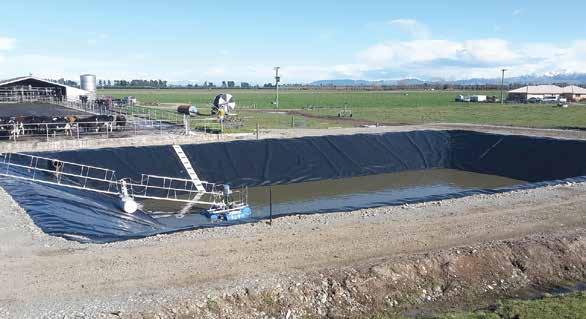

“Stirring your effluent pond storage thoroughly allows for everything to stay in suspension,” the company says.
“This keeps solids from crusting on the top and developing weed growth, or creating a hard layer at the bottom that can become almost impossible to break up.
“It is especially important to stir thoroughly if your effluent system includes a bladder or an above-ground storage tanks or a HDPE lined pond. This is because you cannot easily dig them
out.”
Stirring effluent efficiently helps maximise storage holding capacity. This makes sure that the effluent stays in suspense and up off the bottom of the storage floor to maintain the full capacity of the overall storage.
Nevada says properly mixing effluent storage gives the ability to have an even spread of nutri-

ents across paddocks.
“With more guarantee for even distribution, you can make sure you yield better returns,” it says.

Keeping the pond stirred removes the issue of sand and grit building up that can prematurely cause effluent pump to degrade. By ensuring the longevity of equipment, farms keep operations running without downtime.

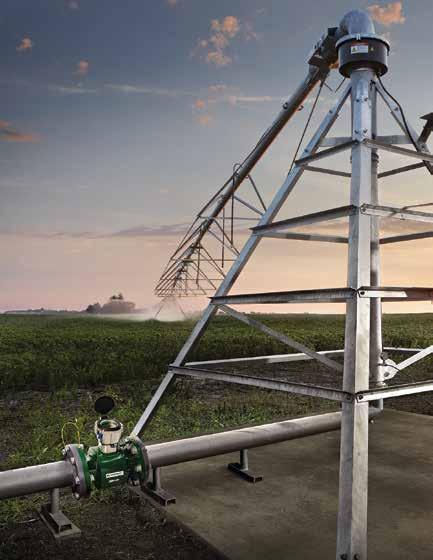

So, how often should you be stirring?
According to Nevada, there is no straightforward rule.
“During the winter months when you are not irrigating, then you can manage stirring fortnightly if you have a powerful enough stirrer that can manage the size of your pond storage.
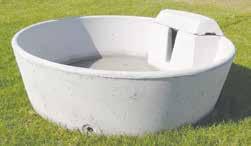
“Not all stirrers are built the same, which is
why it is important to check that your stirrer is specified to suit the size and type of your effluent storage.”
Some farmers ask if they need a pond stirrer when they already have a solid separator.
Nevada says it a farmer is using a weeping wall or other solid separator method, fine particles still settle and can cause issues later.
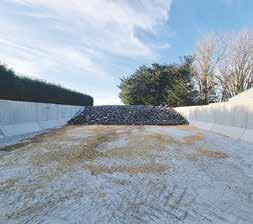
“Even with solid separation, we recommend having a stirrer,” it says.
“We recommend stirring every week for 30 to 60 minutes, depending on the size of the pond and power of the stirrer.”
Start your Nevada electric stirrer or PTO pond stirrer up 30 minutes prior to irrigating, it says.
“If you have a stirrer that is less power-
ful, you may have to stir for longer prior to sucking any effluent out of the pond.
“If you are unable to run the stirrer and pump at the same time due to lack of power capacity, our recommendation is to have an effective stirrer that you can turn on first before switching to pumping.
“Having a correctly specified Nevada pond mixer allows for faster more efficient stirring, rather than running an inefficient stirrer all the time.”
Nevada claims the horizontal thrust of its Typhoon propeller provides the most efficient and effective result.
“The length of time you need to stir the effluent is different for each situation,” it says.
“For small concrete in

ground tanks, it may take only 15 minutes with a highly effective submersible stirrer.
“However, if the effluent storage has not been stirred for several months, it will take a greater amount of time.”
So, should farmers be worried about erosion with a pond stirrer?
Nevada says no, if a farmer has a synthetic lined pond, bladder or tank.
“However, if you have a clay lined pond (without a synthetic liner), it is easy to avoid issues with erosion or damage by adjusting the position of the stirrer.
“Nevada stirrers are easily adjustable for the angle and depth, which protects the walls of your clay lined pond.”
0800 464 393 or visit www.nevadagroup.co.nz
WANGEN agricultural effluent pumps dominate the global dairy industry.
Made in Germany, WANGEN pumps are well-known for their longevity and low maintenance needs. With lifespans measured in multiple decades, they are the pump of choice for agricultural effluent management specialists around the country.
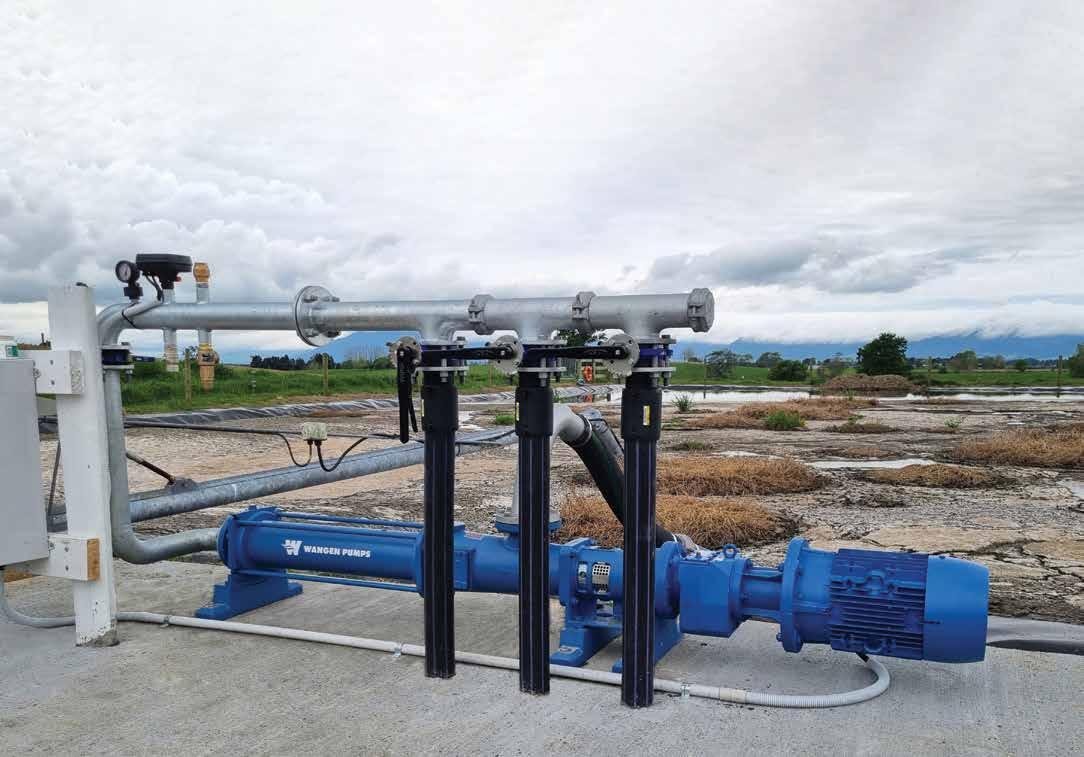
WANGEN progressive cavity pumps maximise effluent pumping efficiency and minimise environmental impact.


They are:
Highly reliable
Slow-running, which reduces vibration and wear
• Extremely low maintenance
If you want peace of mind and lifetime value, ask your local effluent management specialist about WANGEN.
LOW EMISSION Slurry Systems (LESS) have driven the Irish effluent application scene for many years, with a government funded initiative targeting dairy farmers to utilise effluent and slurry more efficiently.
This led to many manufacturers offering simple dribble bar set ups, which as the name suggests, sees a tanker equipped with boom that carries multiple outlet pipes that “dribble” effluent onto the ground.
Unfortunately, the latest round of grants under the Targeted Agriculture Modernisation Schemes (TAMS 3) has seen the dribble bar systems excluded, leading to a gnashing of teeth by farmers and indeed, man-
ufacturers.
Leading feeding and effluent equipment manufacturer Abbey Machinery, based at Nenagh in County Tipperary, has taken note of the furore surrounding the exclusion and produced the Agri Pro trailing shoe


applicator, which, it claims, can better cope with hilly ground.
Described as a low emission slurry spreading (LESS) applicator, the 7.7m Agri Pro trailing shoe is TAMS grant eligible and maintains direct soil engagement in a new

streamlined design. The company suggests that the failure to recognise the inability of existing trailing shoe applicators to cope with less than flat paddocks was one of the main criticisms of the latest round of TAMS grants.
Abbey has taken the opportunity to design and manufacture an updated LESS applicator that provides precise trailing shoe application and soil engagement on hilly or uneven ground, with enhanced contour following.
The 7.7-metre-wide unit is equipped with a 30-hole distributor to ensure a consistent and homogenous flow of effluent to the 40mm hoses spaced along the leading edge of the boom.
This new applicator is said to be designed to
maintain downward force on the individual shoes while remaining as lightweight as possible, aiding stability on slopes.
The vertical trailing shoe is said to leave the slurry in discrete lines on the soil below the crop canopy, with a configuration that also includes a self-levelling boom that adjusts to the paddock’s contours.
Abbey’s head of engineering, Dermot Burke, comments: “At Abbey, we are experts in engineering slurry management solutions, so the new Agri Pro trailing shoe is a natural extension of our Total Cow range.”
While the Agri Pro trailing shoe will pair happily with Abbey’s wide range of slurry tankers, it can be purchased as a standalone unit for retrofitting to other brands of tanker.
WHILE NEW Zealand can claim to be particularly good at producing milk from grass, we still have a lot to learn about effluent.
With the Ukrainian conflict causing a major increase in global fertiliser prices, due to high energy prices and reduced production levels, many dairy farmers started to take a closer look at the nutritional value of effluents and manures. But it looks like our “cousins” on the Emerald Isle appear to be a whole lot further ahead.
Separating the solid and liquid components of dairy effluent would seem to make a great deal of sense, not just by increasing available storage capacity. The liquid faction contains a higher nitrogen concentration, meaning it is an ideal grass growth booster that can reduce the reliance on bought-in fertiliser.
Although fertiliser prices have recently dropped, the sharp drop in the expected final payout for the 2023-24 season means farmers might be reluctant to commit to their normal fertiliser order. Lower fertiliser use risks a shortage of grass and silage after a season that has been compromised because of the extended wet weather.
Undoubtedly, making efficient use of both the liquid and solid manures available makes a great deal of sense.
However, there is another solution that involves separating slurry into solids and liquids, each rich in specific nutrients, which can be applied to the land, saving money
on the expensive artificial fertiliser.
A recent convert to separation is Richard Foster with his Precision Slurry Management business based in Limavady in Northern Ireland, who runs a mobile slurry separator that he takes from farm to farm around the region.
Over the summer of 2020, Richard researched different mobile slurry separators, and eventually settled on a Storth mobile SP600. At the time, the main concern was whether there would there be enough interest in slurry separation to justify purchasing a machine, plus generator and a lorry to transport it about. Precision Slurry Management started trading in September 2020, with a separator mounted on a flat-bed truck, but eventually switched to a unit behind a tractor. At that time of the year, farmers were rallying hard to empty their slurry storage before the October 15 spreading
ban deadline implemented by the Irish government.

“In order to make the system pay, I was looking for a production capacity of around 40 to 50 cubic metres per hour,” says Richard.
“The actual throughput of the machine was only about one third of what it was bench tested for. I have since found out that separators are tested on water, not on cow slurry, hence the throughput goes down.”
Typically reducing the volume of slurry by up to 20% in thick slurries, the benefits include the solids being able to be heaped up and the liquid portion being much lower in volume, which reduces the slurry storage requirement.
“When separated, the liquid containing the bulk of the nitrogen can be spread on grazing ground or after a silage crop, typically soaking into the ground quickly, right down to the roots of the plants.
other external filling solutions in 400 or 600mm diameters.

THE FIRST of French manufacturer Pichon’s new SV slurry tankers certainly looks like it means business.
The tankers are currently undertaking a demo programme in the west of the North Island.
As the name suggests, the SV 16 has a capacity of 16,000 litres, featuring a tank fully galvanised – both inside and
While the company offers a range of discharge options, the demo unit is configured with a folding 9m trailing shoe layout that uses high tensile steel springs to keep the steel coulters in contact with the sward and to also allow superior ground adaptability.
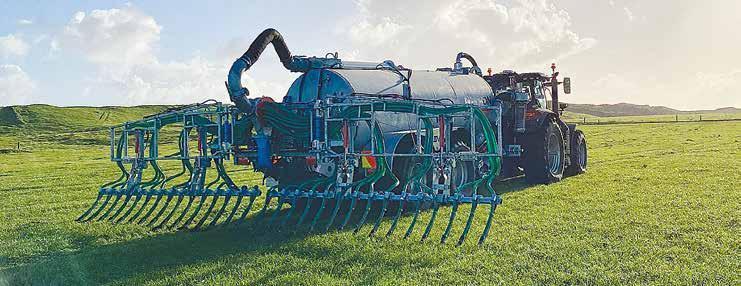
The company points out that the system helps to reduce volatilisation by up to 50%, meaning

Pre-programmed target application rates are maintained or easily adjusted on the move, with monitoring being taken care of by an onboard flow meter.
out –that cuts the tape at 9.0 metres long and 4.1m high, while tipping the scales at between 8 and 10 tonnes, depending on specification, with a gross vehicle weight of 28 tonnes.
The tank features a built-in frame for the under-carriage and suspended tandem axle assembly, the latter offering a 1.8m wheelbase and configured with a steered rear axle, said to reduce the machine’s footprint and tyre wear. During the manufacturing process, the company cleverly incorporates attachment points and bracketry, meaning that the wide range of accessories and options can be an added to the machine later, as needed.
Utilising a high capacity vacuum pump, the demo unit is also equipped with the BP2 auto-filling arm and turbo filler systems that, when combined, offer a 3-minute fill time for fast turnarounds in the yard. There are also options for
that the value of nutrients contained in any effluent is not lost to the atmosphere. To add versatility, the unit is also fitted with a conventional splashplate discharge system.

The discharge system features a heavy-duty macerator to remove any lumps and to create a homogenous and consistent product to deliver to the multiple outlets.
Control is via a joystick and 7-inch touchscreen system, with the integral I-Control function allowing fully automated spreading at the touch of a single button.

Pre-programmed target application rates are maintained or easily adjusted on the move, with monitoring being taken care of by an onboard flow meter.
Transport safety is taken care of by a combined air and hydraulic braking system that acts on the 600-55R26.5 or 650-65R26.5 tyre assemblies to bring things to a controlled stop.
Nevada stirrers are built with a sturdy base that allows for easy angle adjustment and full rotation to ensure optimum placement in the pond, all maintenance can be safely carried out onshore. All stirrers come standard with the high performing TyphoonTM propeller.

ROBOTIC MILK-
ING specialist Lely has announced that Exos, a fully autonomous vehicle for harvesting and feeding fresh grass, will be commercially available to Dutch dairy farms from the middle of 2024.
Having been under development for around a decade, Lely first mentioned the vehicle in late 2020, but more recently talked about extensive testing on 13 Dutch farms, then confirming that these units will be joined by further seven pre-production systems before

the end of this year.
Initially only available for purchase by Dutch dairy farmers, there will be a wider rollout to grass growing regions in neighbouring countries sometime in the future.
Currently, the company is targeting farms with around 150 cows with a minimum of 40ha of grassland, although the autonomous vehicle has also been evaluated on farms with up to 350 animals.
Weighing around 3.4t and operating at speeds of 3-4km/h, a reciprocating cutter-bar with a low power demand offers a 2.0m working, and overall width of 2.8m. The machine’s bunker holds about 1.0t of fresh grass, that when harvested can be delivered to the right, left, or both sides. A front safety bumper is part

of the standard spec, as are front and rear safety cameras. Outdoor navigation is via GPS, while ultrasonic sensors take over when the machine is operated indoors.
The company suggests a typical zero grazing systems up to now have been very labourintensive, but by fully automating the process, the feeding of fresh grass can be more accessible to a larger group of dairy farmers.
Autonomous fresh grass harvesting and feeding means fresh grass can be delivered to the animals on a 24-7 basis, without any increase in labour requirements.
Thanks to the low weight of only 3400 kg and 500mm wide low-pressure tyres, the machine can mow from early spring until late autumn,
utilising individual wheel drive and steering systems to prevent slip and friction when driving or cornering.



As well as harvesting fresh material, Lely Exos can also apply liquid fertiliser in the same process, via 10 outlets located directly behind the mowing unit.
In addition to typical liquid fertilisers, the circular fertilizer from the N-capture of the Lely Sphere-system is also possible, allowing the precise administration and discharge of liquids from the Lely Sphere to help make dairy farming circular.
Electricity to power the vehicle is supplied by a 400v on-board battery. All four wheels have individual electric motors the Exos runs on 520/50R17 tyres (0.8 bar pressure).
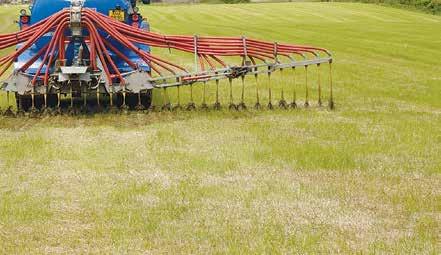
CONTROLLED TRAFFIC Farming
(TCF) systems see arable operators, using tramlines as “highways” for moving through a crop.

Then, use machinery with specific operating widths to ensure there is no need to move off these tracks, thereby limiting compaction to the tramlines, rather than across the whole paddock.
While CTF has never really been used in dairy operations, German manufacturer Krone suggests this is changing as forward-thinking dairy farmers strive to limit compaction, particularly in wetter seasons.
The company suggests that with a
maximum working width of 15.70m, the Swadro TC1570 four-rotor centredelivery rake is said to be an ideal fit for such operations.
Wider than the existing four-rotor TC1370, the V-frame concept on the newcomer is said to be an adapted version of the six-rotor TC2000.
Featuring 15 tine arms on each of the rotors, the mechanical driveline sees the front two rotors rotating about 25% faster than the rear units, which the company suggests promotes optimum forage flow through the machine to create tangle-free, box-shaped swaths. Operated via an ISObus terminal or in combination with an ISObus joystick, overall working width is adjusted by the two front rotor arms, while final swath wide of 1.40 to 2.90 metres is hydraulically adjusted via the rear pair of rotors.
The main frame can be lowered hydraulically to reduce the transport height to below 4.0m without the need to fold or remove any tine arms. The transport chassis is equipped with 710/40 R22.5 tyres as standard, or
optional 800/35 R22.5 units, while infield stability is improved with the use of wide 16 x 9.50-8 tyres on the fourwheel rotor chassis’ and the 15/55-17 support wheels on the two front arms. Electric height adjustment allows individual or simultaneous rotor adjustment, will the choice of two preselected heights to be saved on the terminal and activated at the touch of a button.
At headlands, the rotors can be set to lift just over existing swaths, while the lift delay of the rear rotors is also adjustable, and the automatic SoftDown mechanism slows the speed of lowering just before the rotors touch down. Section control is also available to lift/lower the rotors automatically using GPS.
WITH THE Irish dairy industry often compared to that of New Zealand, it would appear that Paddy is a long way ahead of his Kiwi counterpart when it comes to using dairy effluent.

Those in the Emerald Isle recognised the value of nutrients many years ago, leading to a huge group of manufacturers who specialise in slurry and effluent spreading machinery.
Indeed, the industry has moved on from the more traditional slurry tanker that delivered via a splash plate, that is said to lose high levels of nutrient to the atmosphere, to now favour
Spreading (LESS) equipment in increasing numbers, with the dribble bar being one of the more common LESS methods.
Many farmers complain that when spreading slurry with a dribble bar set-up, the slurry can sometimes cake in lines where it landed in the paddock.
This is said to lead to increased stand-off times before cows can return to the paddock, contamination of the grass and some farmers reporting that slurry can still be seen in these lines at the base of the sward at silage mowing time.
This can mean contamination in the consoled crop or the need to set the mower higher and sacrifice volume to miss the lines of hardened slurry
Stephen McKeown,a farmer from Newtownabbey, Co. Antrim in Northern Ireland, has developed a simple, patented device called Splash It, that is said to solve the issue of dribble-bar applied slurry
being left in lines in the sward.
Stephen says, “We saw a number of problems being created by dribble bars, not least the caked lines of slurry being left in the paddock
and too much slurry being deposited in the one area”.
He says that when slurry was being deposited in lines on his own farm, he noticed it was “killing the grass” in the immediate area, particularly so in dry periods. Additionally, some grass was growing, but tended to push the remaining dried slurry up into the sward, which come silage time, got raked up and ended up in the silage clamp or round bale.
“We designed and developed Splash It so it can be attached to any dribble bar, just needing two basic bolts to attach it to the dribble
bar pipes.”
Noting that it typically took around and hour to fit the units to dribble bar systems with forty outlets, the key benefit is that slurry is applied in a wideangle format, with a much more even coat across the working width, while still meeting the government’s requirements for low emission spreading.
Stephen comments that the product is manufactured using polypropylene that is injection moulded, making it hard wearing and durable with a degree of flexibility to ensure it won’t break.

